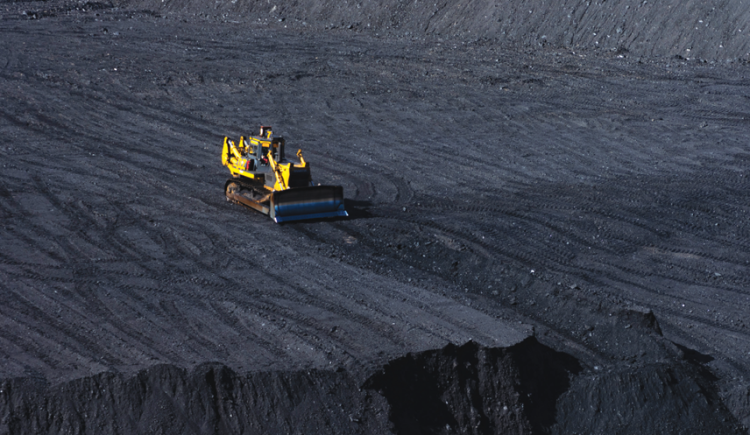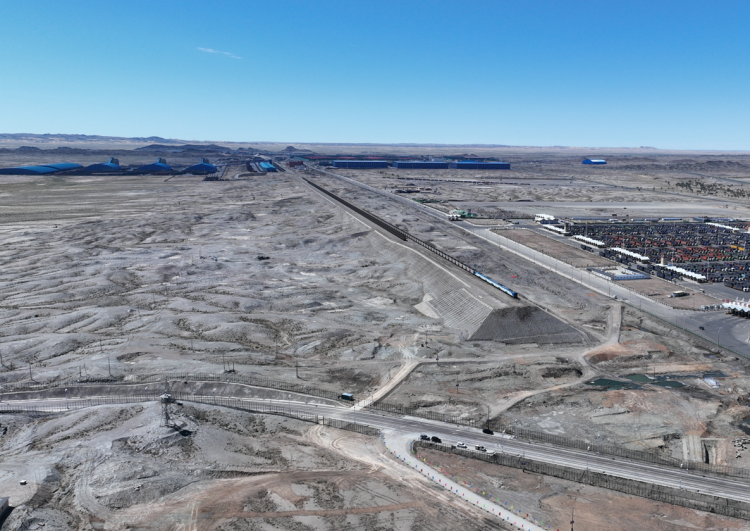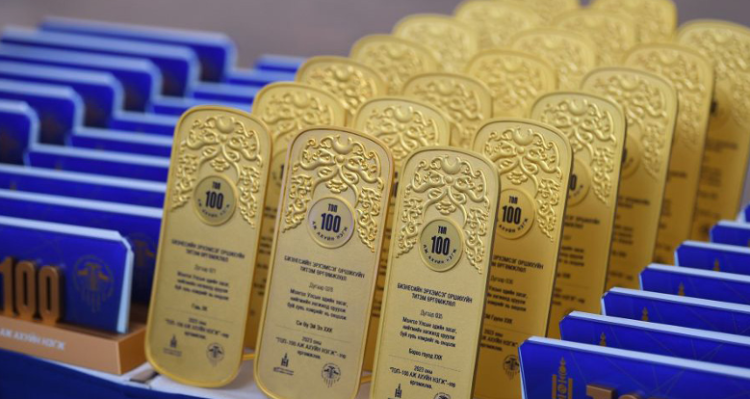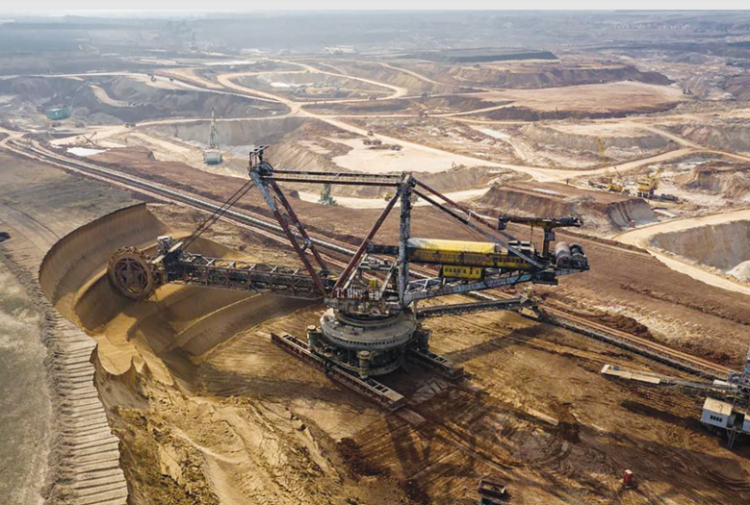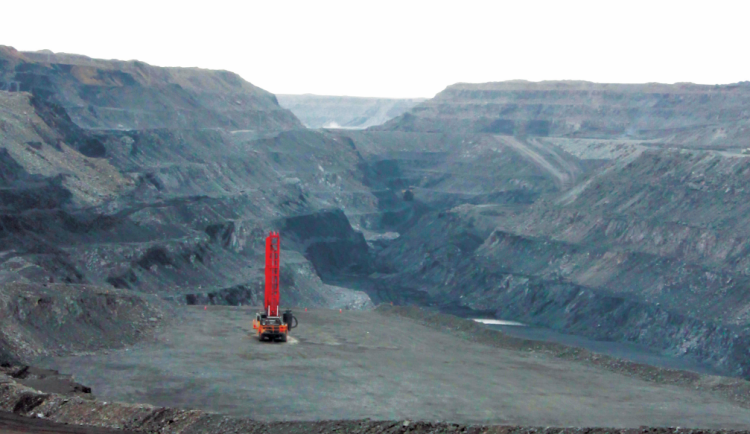ODJARGAL.E
od@mininginsight.mnOne of the primary goals outlined in the Government's New Recovery Policy is the "Recovery of Industrialization." This objective has been spearheaded by prominent figures, namely Nyamtaishir.B from MAK, Delgersaikhan.B from BTEG, and Odjargal.J from MCS. Through their efforts, the state policy has translated into tangible results, promoting the growth of modern industries. As a result, three mining giants of our country are once again emerging, reminiscent of their prominence 15 years ago.

2008. A period of deepening global economic crisis. The days when our country decided to put its large mineral deposits into economic circulation to overcome the financial crisis. Negotiations with Western investors continued in Oyutolgoi, the Tavantolgoi deposit was taken over by the state, and preparations were being made for competition between foreign and domestic giants in the strategic investor competition. China's Shenhua, Japan's Mitsui, Sumitomo, Itochu, Sojitz, Luxemburg's ArcelorMittal, USA's Peabody Energy, Russia's RJD, Australia's Fortescue Metals, Xstrata, Brazil's Vale, South Korea's COPEC have expressed their interest. At that time, the state company "Erdenes Mongol" was established, and the goal was to make a significant contribution to the economy and social life of the country through the construction of strategically important mineral deposits and infrastructure, the implementation of projects and programs, and the efficient management of resources. The government has unveiled the "Mongolia Industrialization Program," a comprehensive initiative aimed at fostering industrial growth. This program encompasses several key projects, including the construction of a power plant in Tavantolgoi to provide energy to industries in the Gobi region. Additionally, the program involves the implementation of the "Shivee Ovoo" project, which holds significant potential for energy exports. Furthermore, the program includes copper smelting projects in Erdenet and oil distillation projects in Darkhan. In 2008, the construction of a railway emerged as a highly debated subject in Mongolia. Various stakeholders, including the government, private sector, and foreign investors, were meticulously evaluating the advantages of transporting mining products via rail. In response to the government's request, the World Bank conducted a comprehensive analysis comparing the cost and efficiency of four coal transportation routes from Tavantolgoi to Choibalsan. Their findings indicated that the route leading to Gashuunsukhait border offered a more cost-effective solution. During that year, the coalition was led by Bayar. S, who granted special permits for railway infrastructure construction to three private sector companies. This decision stemmed from the recognition that the government alone lacked sufficient funds to build railways connecting the deposits. As a result, the involvement of national companies was deemed crucial for the development process. Consequently, three private companies stepped forward to invest in mining railway infrastructure. The company "Mongolyn Alt" focused on streamlining production and export activities in the Nariinsukhait deposit. Simultaneously, "Energy Resources" embarked on mining operations at Ukhaakhudag in Tavantolgoi, while "Bold Tumur Eruu Gol" initiated the exploitation of the Bayangol deposit. These coordinated efforts by private entities were essential for advancing the development of miningrelated railway infrastructure.
Under Government Resolution No. 134, the "Bold Tumur Eruu Gol" LLC was granted a license to construct a 98-kilometer railway infrastructure from the Yeroo railway station to the Bayangol iron ore deposit situated in Yeroo soum territory of Selenge province. Initially operating in a different sector, "Bold Tumur Eruu Gol" embarked on the venture from scratch, undertaking tasks such as establishing the mine, recruiting and training the workforce, collaborating with investors, and constructing the necessary infrastructure. Upon the commencement of Bayangol mining and export in the primary agricultural region, residents encountered challenges due to the presence of heavy machinery and technical dust. Additionally, iron ore mines entail higher mining and operating costs compared to coal mines, typically 2-3 times higher. To achieve economic efficiency, it became crucial to facilitate cost-effective transportation. Consequently, during that period, Director Delgersaikhan.B envisioned a 115-kilometer railway project, beginning from Khandgait station and extending to Yeroo station of UBTZ.
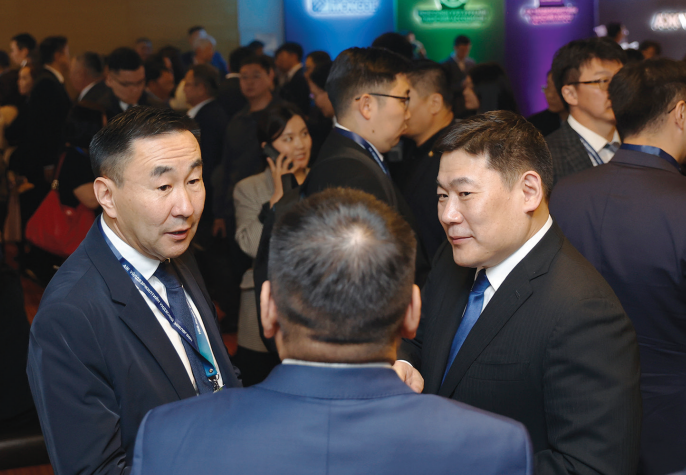
Under Government Resolution No. 121, "Energy Resources Rail" LLC was granted the concession right to construct the railway infrastructure along the Ukhaakhudag-Gashuunsukhait route. Subsequently, two months later, the mine preparations for the Ukhaakhudag project commenced. While MCS served as the principal investor, Odjargal.J assumed the role of director for the "Energy Resources". "Energy Resources" harbored a profound ambition to promote the "Ukhaakhudag" brand of coking coal from the Tavantolgoi field, which had garnered significant interest from foreign investors, from entering the global market. With China, India, Japan, and South Korea collectively accounting for a significant portion of global metallurgical production, the quality of Tavantolgoi coal stood on par with Australia's largest coal supplier. To ensure competitive pricing despite the low extraction and processing costs, the Ukhaakhudag-Gashuunsukhait railway presented a viable solution to transport the product to the target market. "For the country to progress, extensive infrastructure and development work needs to be undertaken. This responsibility lies with the private sector. The country does not need to construct roads and power plants. In a market-oriented society, the state's role is to develop policies and create conducive conditions for the private sector to thrive. Mongolia's major construction projects are often carried out by foreigners, and it is not fitting for Mongolians to rely solely on selling drinks and ice cream while competing for mining licenses," stated Director Odjargal.J in an interview on July 9, 2007. He aimed to promote a national mining company capable of participating in national development initiatives, backed by robust financial strength. Inspired by the success of Erdenet, he sought to demonstrate that Mongolians could independently construct modern, world-class mines. "Energy Resources" envisioned a comprehensive development plan, encompassing a coal concentration plant, an energy station to support mining operations, a railway for product transportation, a road network, residential areas for workers, a hospital, a school for children, and a kindergarten. The company aimed to secure funds for these endeavors from the international market.
Government Resolution No. 319 authorized MAK with a permit to construct railway infrastructure connecting the Nariinsukhait coal deposit in Gurvantes soum region of Umnogovi province to Shiveekhuren port on the state border. During this period, MAK successfully exported coal from the Nariinsukhait mine for five years. Through a joint venture with a foreign trade partner, and utilizing its funds, MAK had established the necessary infrastructure to ensure a reliable electricity supply to the mine and the surrounding region, facilitated through the Ceke port in China. Leveraging its strategic proximity to the border, which was a mere 50 kilometers away, MAK devised plans to construct a narrow-gauge railway connecting the Nariinsukhait field. This railway would facilitate seamless access to the primary market. During this period, MAK embarked on the initial efforts to develop the Shiveekhuren port. The company's ambitious vision to operate the port around the clock was realized through collaborative decisions made by both governments. In addition to their railway endeavors, MAK focused on several other noteworthy projects. At that time, the concept of Coal-To-Liquids (CTL) technology, enabling the production of gasoline from coal, was a relatively new and innovative topic for Mongolians. A feasibility study for a coal liquefied gas plant, based on the Aduunchuluun deposit, was conducted by the US company "Fluor," with plans to commence operations in 2019. Furthermore, MAK intensified its efforts in coal deep processing, including the production of diesel fuel from Khoot coal, household briquettes from Aduunchuluun coal, the establishment of a coal concentration plant and power plant in Nariinsukhait, and the development of a semicoke plant for processing Eldev coal. Additionally, preparations were underway to register the extensively explored resources of the Tsagaansuvarga deposit into the state mineral fund, following seven years of thorough exploration. Regarding the coppermolybdenum project, the open-pit mine was projected to be operational by 2011, with full-scale production expected to be achieved by 2013. At that time, Chairman of the Policy Council of MAK Nyamtaishir.B expressed his concerns, stating, "As private sector companies, we bear a significant burden that extends beyond our responsibilities, including project implementation, infrastructure development, and personnel training. However, there is a lack of government policies that provide the necessary support and conducive conditions for companies to thrive. The primary responsibility of the government lies in the development of infrastructure, energy, railways, roads, and the formulation of policies aimed at preparing a skilled workforce." Nyamtaishir.B further highlighted the absence of any new power plants built since 1990, emphasizing that Mongolia relies heavily on the energy provided by power plants established during the socialist era. Given Mongolia's rich coal resources, especially lignite, there is ample opportunity to construct multiple power plants instead of just one. He emphasized that establishing power plants and resolving infrastructure challenges would pave the way for the development of numerous industries. In an interview, Nyamtaishir.B underscored the pivotal role of power plants and infrastructure in unlocking the potential for widespread industrial growth, stating, "Once the power plant is established and infrastructure issues are addressed, it will create opportunities for the development of numerous industries."
The coal and iron ore deposits mentioned have historically played a vital role in the country's export earnings. Right from the initiation of these projects, there were discussions about their comprehensive planning, including the development of road and railway infrastructure, as well as the establishment of refineries, power plants, and ports. These considerations were made as early as 15 years ago, recognizing the interconnectedness of various components in ensuring the success and efficient operation of these projects.
2023. How have these initiatives progressed over time, starting from their initial stages, and what tangible outcomes and achievements have they generated? How has the development of the Bayangol railway, built and operated by Delgersaikhan. B’s "Boldtumur Eruu Gol," progressed since signing the concession agreement? Can you elaborate on its significance as the first privately-funded railway in the country and its role in both regional and national transportation, including the transportation of raw materials from mines in the Darkhan and Selenge regions? Recently, the Zuunbayan-Khangi railway was constructed through a public-private partnership, completing the project in just 11 months. This railway has facilitated the export of raw materials to Khangi Port. Notably, BTEG has established its rolling stock comprising 3,003 wagons, locomotives, and a maintenance depot. As a company engaged in mining, export, railway operations, and transport logistics, BTEG is currently in the process of constructing a ferrous metallurgy complex. Significant progress has been made in the development of the Wet Magnetic Concentration Plant, which is one of the five main technological plants. Additionally, the construction and equipment installation of two Coke and Coal Washing plants are scheduled to be completed this year. Subsequently, the concentration plant and hot casting facilities will be established in a phased manner next year. The full production capacity of Altanshireet industrial park is anticipated to be operational by 2025. To facilitate the transportation of coking coal and iron ore, the Tavantolgoi-Zuunbayan railway will transport coking coal to Altanshireet industrial park, while iron ore from Darkhan and Selenge will be transported via UBTZ railroad.
"Energy Resources", under the name of Mongolian Mining Corporation (MMC), raised USD 650 million from the Hong Kong stock exchange in 2010, marking a significant milestone as the first-ever Mongolian company to achieve such financing. Odjargal.J, the chairman of the board of directors, expressed during the initial public offering (IPO), "We aim to showcase Mongolia's capability to implement mining projects that meet international standards. Going forward, we strive to become the leading mining company in Asia." Notably, MMC's USD 440 million international bonds, issued over five years, were recognized as one of the best financial transactions in Asia. Furthermore, the company raised an impressive USD 1.2 billion through share trading and bond issuance, which was instrumental in establishing the Ukhaakhudag project. "Energy Resources" achieved a significant milestone by becoming the first company in Mongolia to process and export coal with the operation of its 15 million tonnes per year coal concentrator. This accomplishment highlights their commitment to valueadded processing and expanding the country's coal export capabilities. Moreover, the company constructed the Ukhaakhudag-Gashuunsukhait highway, a 245 km infrastructure that supports the coal export activities in the Tavantolgoi region. This critical transportation link was transferred to state property, ensuring continued support for the coal export industry in the area. Additionally, "Energy Resources" established an 18 MW power plant, providing a reliable source of electricity not only for the mine but also for Tsogtsetsii soum, which had been deprived of electricity for many years. This power plant has greatly improved the living conditions and economic prospects of the local community. The company's investments extend beyond the mine and power plant. They have also contributed to the development of essential infrastructure, such as the Tavantolgoi airport, a clean water supply system for Tsogtsetsii soum, and the construction of the "Tsetsii" residential area. Furthermore, they have invested in educational facilities, including a school for 700 children, a kindergarten for 150 children, and a boarding house for 200 children, demonstrating their commitment to social development in the former Gobi region. These accomplishments reflect the tangible realization of the vision and aspirations outlined by Odjargal.J. However, after 15 years, the dream of transporting Ukhaakhudag's coking coal by rail remains unfulfilled. "Energy Resources" faced multiple setbacks, with the government granting and subsequently canceling railway construction permits three times. The project became mired in political controversies and disagreements over the railway gauge. Currently, efforts are underway to construct the UkhaahudagGashuunsukhait railway with a wider gauge. However, progress has been hindered by stalled works on the border connection with China and the pending construction of transshipment facilities to facilitate seamless operations between different gauges. During the National Industrialization Conference (May 26, 2023), Odjargal.J outlined the company's future endeavors. He emphasized the focus on export promotion, particularly in the mining and agricultural sectors, as they present more viable opportunities. Over the years, "Energy Resources" has dedicated substantial research to the development of a coke plant. With MCS's expertise in the energy sector, the company aims to explore ways to provide "green" energy to mining and processing plants, aligning with global trends. Odjargal. J expressed his commitment to implementing projects in this direction, ensuring sustainable practices for the industry.
Regarding MAK, there has been a significant delay of 15 years in the construction of the NariinsukhaitShiveekhuren narrow-gauge railway due to the government's policy on railway transportation. However, this month marks the beginning of construction as Nariinsukhait companies, led by MAK, have initiated the building of a 7.1 km railway that will pass through Shiveekhuren-Ceke border. Additionally, plans are underway to establish a 30 MW power plant based on the Nariinsukhait mine to ensure a reliable energy source. The Tsagaansuvarga project, initially planned to be fully operational by 2013, has experienced significant delays and is now expected to be operational by 2025. During a press interview in 2010, Nyamtaishir. B emphasized the importance of a national policy that supports and protects domestic manufacturers and companies, as seen in many other countries. He stressed that government policies should foster the development of domestic enterprises to compete on par with foreign companies. Without such policies in place, the foundation for the growth of the national industry would be lacking. MAK is currently directing its efforts towards extensive research on hydrogen, commonly referred to as the "green" fuel of the new generation.
Additionally, they are actively exploring the potential for glass production utilizing their gypsum reserves. For the first time, our country has established the National Industrialization Committee. The committee consists of notable individuals such as Nyamtaishir.B, Odjargal.J, and Delgersaikhan.B, who has been elected as a member. Nyamtaishir.B has taken the role of chairing the Coal Deep Processing Subcommittee, while Delgersaikhan.B leads the Iron and Steel Subcommittee among the four main sub-units.
The projects included in this year's plan are as follows:
✓ Accelerating the progress of the oil pipeline project
✓ Attracting investments for the copper concentrate processing plant project in Erdenet
✓ Enhancing the "Kherlen Toonot" and "Orkhon Ongi" projects under the "Blue Horse" initiative
✓ Seeking investment for the construction of the Oyutolgoi copper concentrator
✓ Stepping up infrastructure development for the "Mongolian Steel Complex I" project
✓ Expanding and promoting industrial and technological parks
✓ Increasing efforts in oil exploration and reserves augmentation
✓ Advancing the deep processing of coal and expanding product manufacturing
The Committee dedicated to intensifying industrialization places a high priority on several key projects aimed at driving economic growth and development. These projects include copper refining and value-added export, separation of metals like gold and molybdenum from copper content, processing of iron ore to meet domestic steel needs and deep processing of coal. The National Committee is committed to initiating a transition toward becoming a producer. In light of this objective, they firmly assert the following stance. During the National Conference on Industrialization held on May 23, 2023, Minister of Economic Development Khurelbaatar. Ch provided an overview of the past 15 years and highlighted key points. He emphasized that Mongolia's development is closely linked to its exports and expressed concerns about the country's lack of progress in terms of competitiveness. The Minister mentioned that all of Mongolia's products must pass through the Zamyn-Uud border, which has inadvertently led to the flourishing of illegal activities. This economic policy has contributed to Mongolia's lagging position in terms of development. Mongolia currently ranks 111th out of 133 countries in the economic integration index. Furthermore, the Minister pointed out that over the past 15 years, the level of export diversification fell by 14 places. During this period, only four types of new products (lead ore, canned meat, woolen textiles, and animal and plant oils) were added to the list of export products in Mongolia.
THE NATIONAL COMMITTEE IS COMMITTED TO INITIATING A TRANSITION TOWARD BECOMING A PRODUCER. IN LIGHT OF THIS OBJECTIVE, THEY FIRMLY ASSERT THE FOLLOWING STANCE.
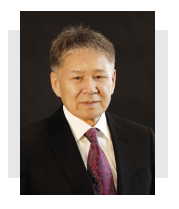 Nyamtaishir.B, the Chairman of the Policy Council of Mongolyn Alt LLC and also the Chairman of the Coal Deep Processing SubCommittee of the National Industrialization Committee, emphasizes the crucial role of the industry in Mongolia. He highlights that despite previous discussions by the government regarding the establishment of a copper refinery, a steel plant, and a power plant, these plans were never realized. Recognizing the need for a shift in approach, the government and ministers now acknowledge the importance of refraining from competing with the private sector and instead fostering confidence in its capabilities. Over the past three decades, the private sector has independently developed a limited number of industries. Consequently, it is now essential to implement an industry restructuring process through effective public-private partnerships.
Nyamtaishir.B, the Chairman of the Policy Council of Mongolyn Alt LLC and also the Chairman of the Coal Deep Processing SubCommittee of the National Industrialization Committee, emphasizes the crucial role of the industry in Mongolia. He highlights that despite previous discussions by the government regarding the establishment of a copper refinery, a steel plant, and a power plant, these plans were never realized. Recognizing the need for a shift in approach, the government and ministers now acknowledge the importance of refraining from competing with the private sector and instead fostering confidence in its capabilities. Over the past three decades, the private sector has independently developed a limited number of industries. Consequently, it is now essential to implement an industry restructuring process through effective public-private partnerships.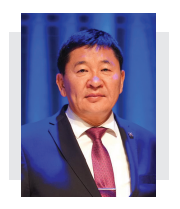
Delgersaikhan.B, a Parliament Member, Chairman of the Subcommittee on Black Metallurgy of the National Industrialization Committee, and founder of BTEG, emphasizes the importance of the state's support for the private sector in revitalizing the industry. He expresses concern that the government's reliance on the limited coal production from the Tavantolgoi deposit may hinder progress. Instead, he believes that the private sector should take the lead in the production of final products, with the government refraining from obstructing their efforts, if not providing direct financial support. Delgersaikhan.B emphasizes that it is crucial not to over-pressure business owners, as this may lead to self-interest and a decline in their willingness to take risks. Such a scenario would ultimately harm the country. To foster growth, enterprises require supportive policies that encourage investment and development.
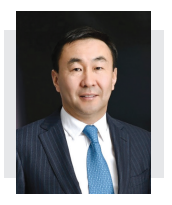
Odjargal.J, Chairman of the MCS Group and member of the National Industrialization Committee, emphasizes the need for collaboration between the government and the private sector to implement large-scale industrial projects. He believes that both parties must establish a mutual understanding of how to work together effectively. Odjargal.J expresses a preference for maintaining some distance from the government, suggesting that if the government lacks sufficient funds for construction, long-term repayment through concession agreements with the private sector can be a viable solution. He particularly emphasizes the importance of public-private partnerships for infrastructure projects. The private sector faces limitations in obtaining large external loans and financing for export and strategic projects, as well as warranty issues. In this context, he emphasizes the necessity of developing correct, healthy, fair, and transparent models and solutions for cooperation between the government and the private sector, as well as the importance of avoiding politicization and ensuring a strong legal framework without risks when engaging with the government.
Mining Insight Magazine №06 (019), Зургаадугаар сар 2023






